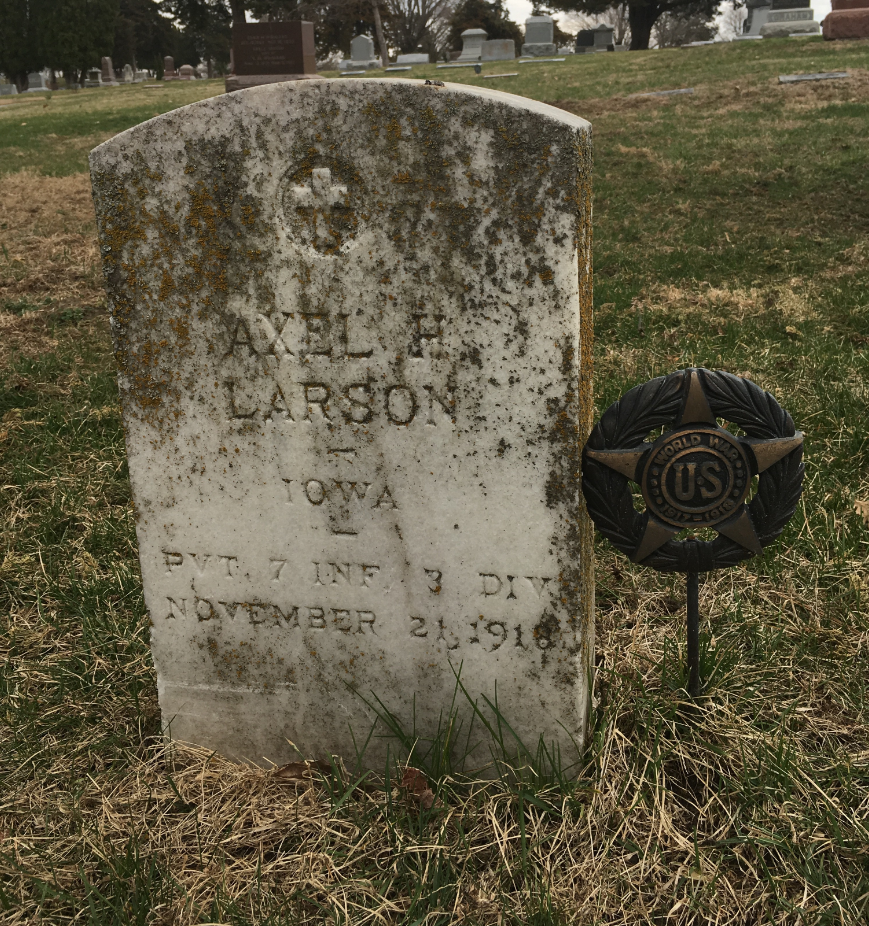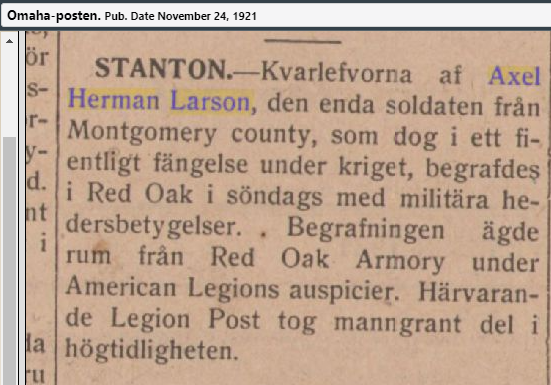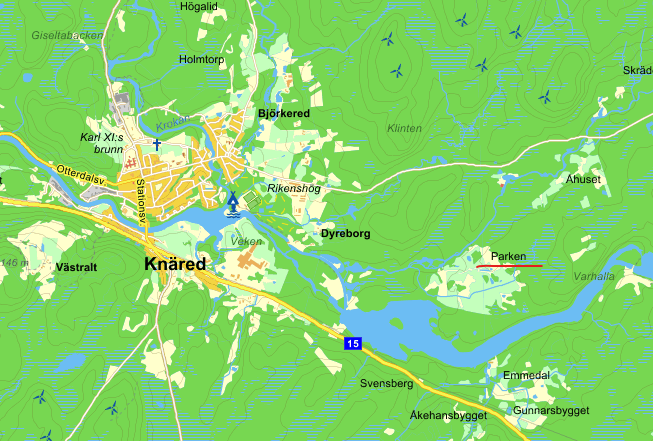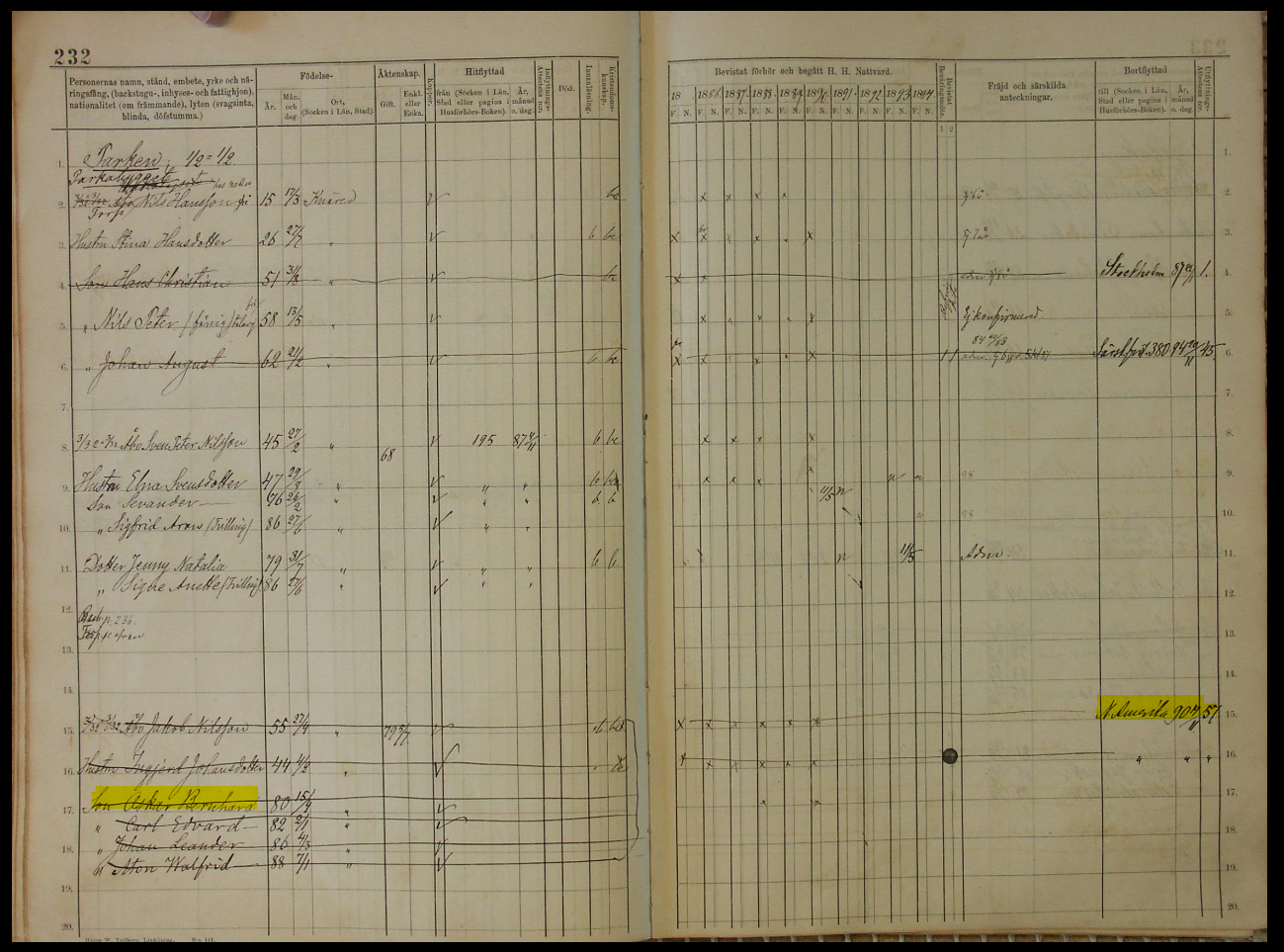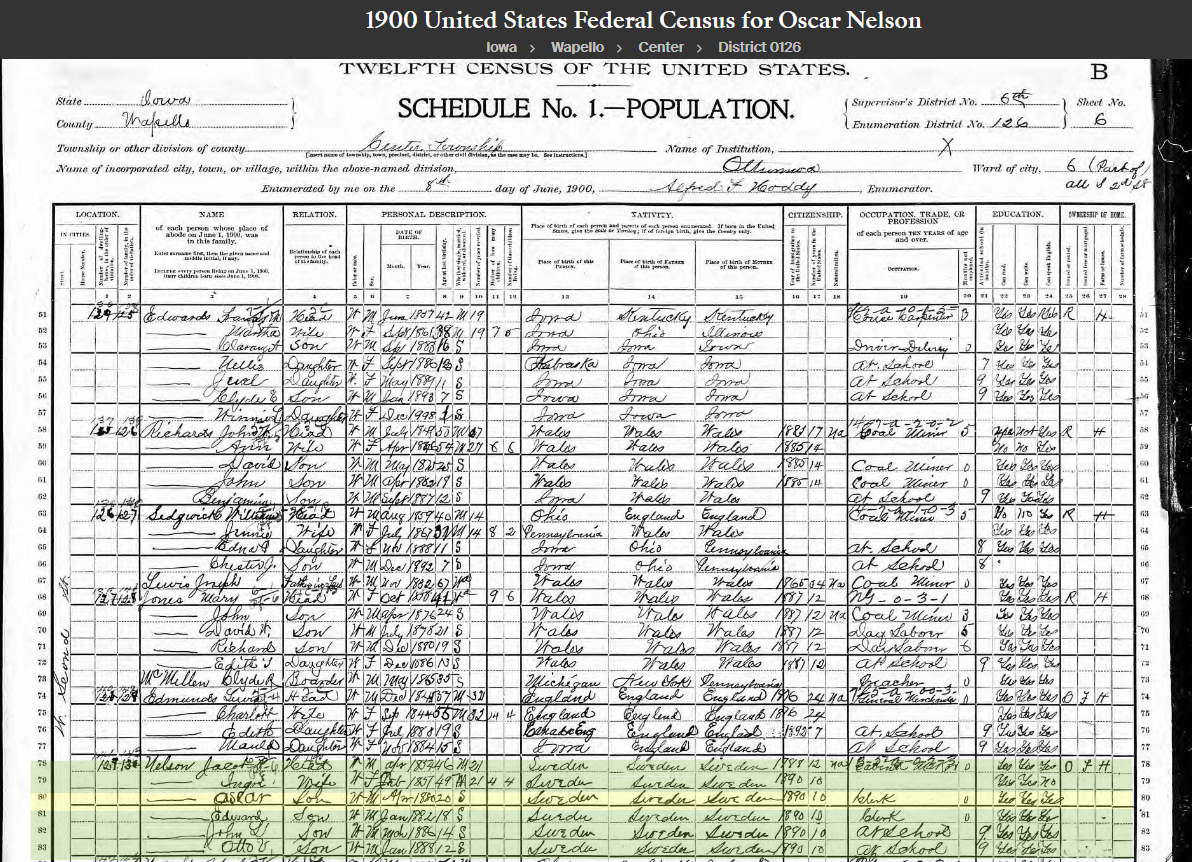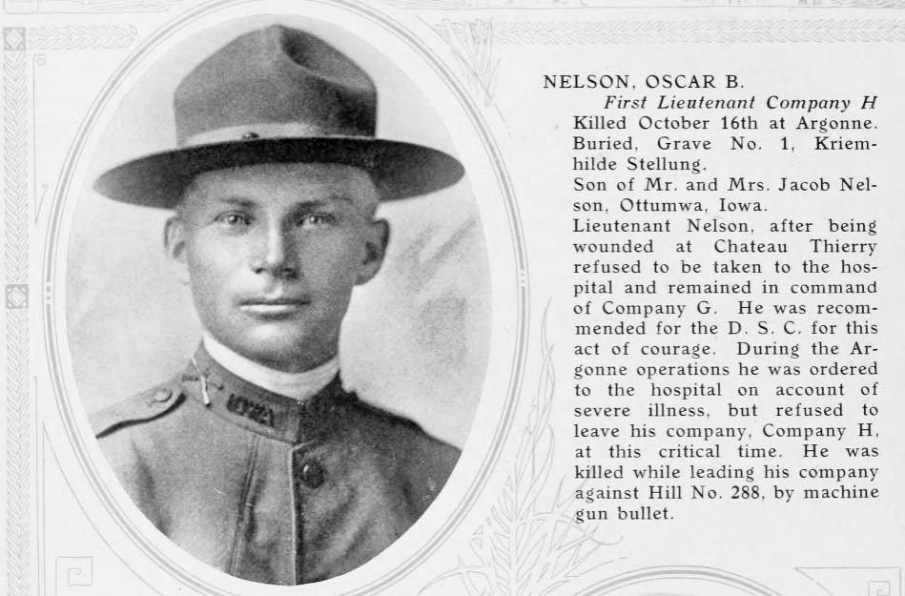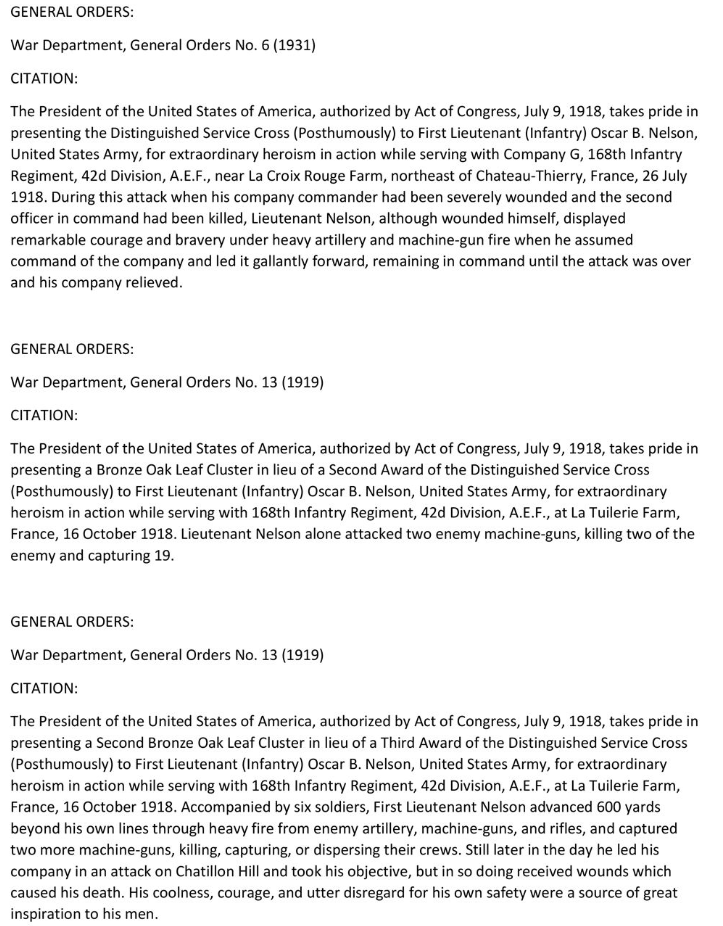There are so many things I want to know when reading about certain individuals who I come across when I do my research about those Swedish born soldiers who fought in the Great War.
In this case I look into Axel Herman Larson’s eyes, in his photo, and wonder how he experienced his last days in a German prison, where he died in Dysentery, a day in November, 1918.
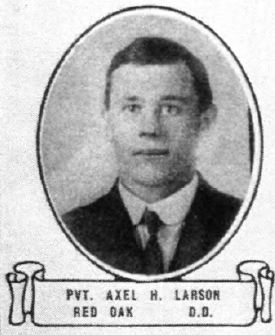
Axel H Larson (Axel Herman Larsson), was born in Sweden October 4th, 1891, in the parish of Södra Vi, in Kalmar county. He was raised by his mother Hulda Karolina Augustdotter and his father Lars Magnus Larsson.
He grew up at the farm of Brunnstorp, in the area of Hoppeskogen, in Södra Vi, together with his 4 other siblings, his brother Carl, and his sisters Emmy Sofia, Gerda Charlotta and Anna Karolina.
Axel decided, reason unknown, to move to North America, and left Sweden September 2nd, 1910, with the Ship “Calypso”, via Hull in England. He arrived around 1910, and probably settled down in Red Oak, Montgomery, Iowa. I can’t confirm this with any census documents but will try to look for them later on.
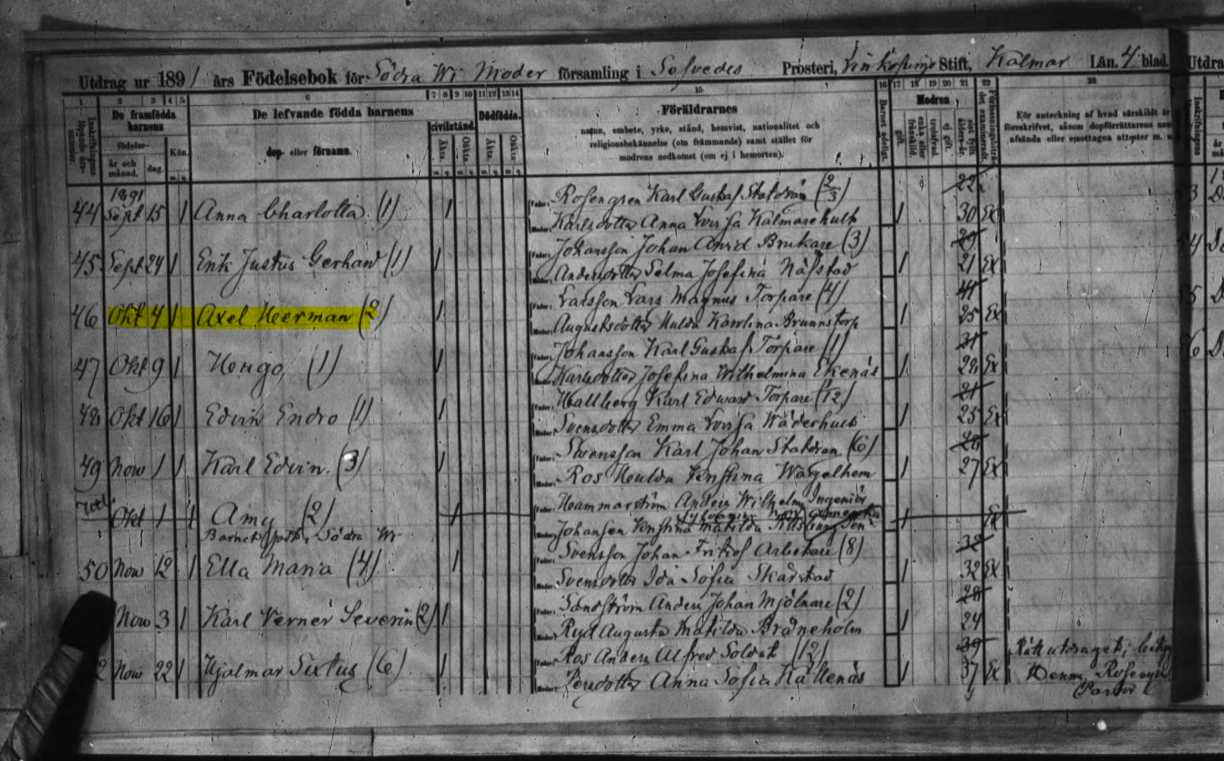
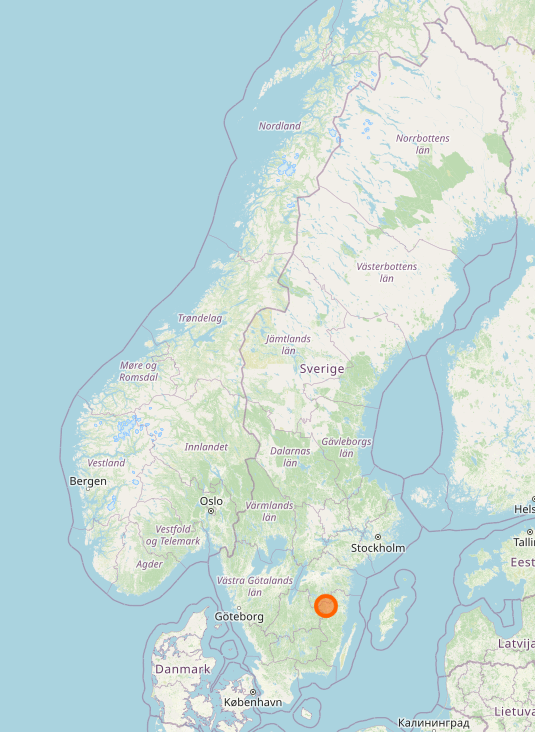

Axel was drafted on 5th of June, 1917, and joined the Company I, 7th Infantry regiment, 3rd Division, in the American Expeditionary Forces.


I haven’t found any documents about when he left North America for France, and it is hard to find any documents about when he was taken prison, but I know he ended up up as a Prisoner of War. Axel Herman Larson died as a prisoner of War and was buried in Germany, near the town of Worms in the SE part of Germany, on a cemetery in the part of Hochheim.
He is declared dead in some German documents, which mention his birthplace as Gullringen, which is quite close to Södra Vi in Kalmar county, Sweden. In the American casualty cards his brother Carl Larson (Karl August Larsson) is mentioned as his Next of Kin. Carl left Sweden for North America in August 15th, 1912, and I assume the lived together in Red Oak, Iowa. In the American casualty cards it is also mentioned that Axel died of Dysentery.
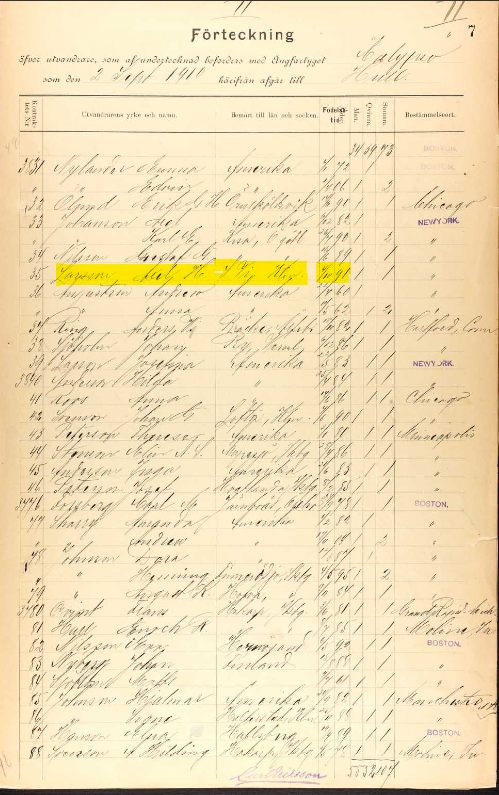



Axel is transported from France to North America between October 14th to October 25th, 1921. Oscar Wenstrand, who was born in North America, received Axels remains in November 1st, 1921. Oscar Wenstrand lived in Red Oak, Montgomery, Iowa, and I assume it was in this Red Oak Axel and his brother Carl lived as well. At this moment I don’t know how Axel and Oscar was connected.
In the Swedish-American Newspapers It is mentioned that he is reported in American documents to be a Prisoner of War in September 24, 1918, right before the Meuse-Argonne Offensive. it is also mentioned that Axel was transported back from Germany to France, as a released prisoner, which can make you believe that he was released alive, but I think the newspaper didn’t had all the information about Axels situation on tha specific date. In March 1919 it is finally reported that he died in prison, and that he fell in German hands alive.

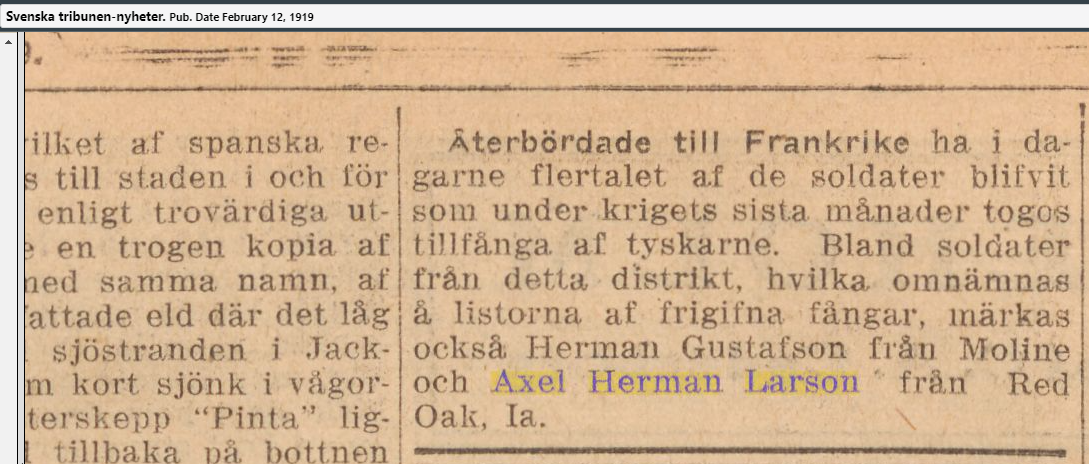
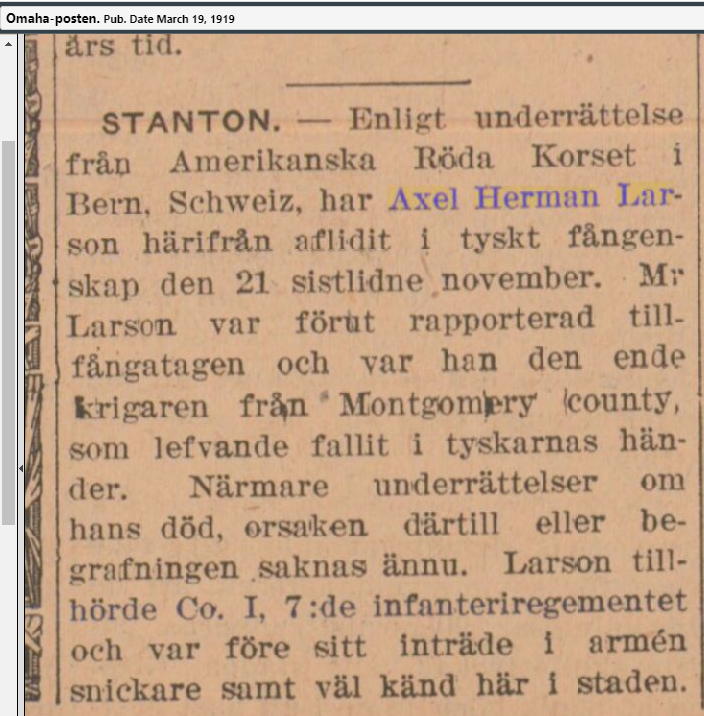
Axel is now buried in Evergreen cemetery in Red Oak, Montgomery, Iowa. The Swedish-American Newspaper mentioned that his remains was buried Sunday of November 20, 1921.
May Axel rest in peace, he is not forgotten.
